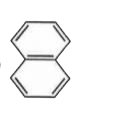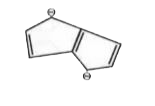Which of the following is polar aprotic solvent ?
DMSO
Crown ether:
DMG
All of these
The correct Answer is:D
To determine which of the following is a polar aprotic solvent, we need to understand the definitions of "polar" and "aprotic."
1. Understanding Polar Solvents:
- A solvent is considered polar if it has a significant difference in electronegativity between its atoms, leading to a dipole moment. This means that the molecule has regions of partial positive and negative charges.
2. Understanding Aprotic Solvents:
- Aprotic solvents are those that do not have hydrogen atoms bonded to electronegative atoms (like oxygen or nitrogen). This means they do not have acidic protons that can participate in hydrogen bonding.
3. Analyzing the Given Options:
- Let's analyze the potential candidates for polar aprotic solvents:
- DMSO (Dimethyl sulfoxide):
- Structure: (CH3)2SO
- Contains a sulfur atom double-bonded to oxygen. The oxygen is more electronegative than sulfur, creating a dipole moment. There are no hydrogen atoms bonded to electronegative atoms, making it aprotic.
- Conclusion: DMSO is a polar aprotic solvent.
- Crown Ether:
- Structure: A cyclic compound with ether linkages (e.g., multiple -O- groups).
- Contains electronegative oxygen atoms, creating a polar environment. Additionally, it does not have hydrogen atoms bonded to electronegative atoms.
- Conclusion: Crown ether is also a polar aprotic solvent.
- DMG (Dimethylglyoxime):
- Structure: (CH3)2C(=N−OH)
- Contains nitrogen and oxygen, which are electronegative. The molecule has a dipole moment due to the electronegativity difference. However, it has hydroxyl (-OH) groups, which means it has hydrogen attached to an electronegative atom.
- Conclusion: DMG is not a polar aprotic solvent.
4. Final Conclusion:
- From the analysis, DMSO and crown ether are polar aprotic solvents, while DMG is not. Therefore, the correct answer is that both DMSO and crown ether are polar aprotic solvents.
- A solvent is considered polar if it has a significant difference in electronegativity between its atoms, leading to a dipole moment. This means that the molecule has regions of partial positive and negative charges.
- Aprotic solvents are those that do not have hydrogen atoms bonded to electronegative atoms (like oxygen or nitrogen). This means they do not have acidic protons that can participate in hydrogen bonding.
- Let's analyze the potential candidates for polar aprotic solvents:
- DMSO (Dimethyl sulfoxide):
- Structure: (CH3)2SO
- Contains a sulfur atom double-bonded to oxygen. The oxygen is more electronegative than sulfur, creating a dipole moment. There are no hydrogen atoms bonded to electronegative atoms, making it aprotic.
- Conclusion: DMSO is a polar aprotic solvent.
- Structure: A cyclic compound with ether linkages (e.g., multiple -O- groups).
- Contains electronegative oxygen atoms, creating a polar environment. Additionally, it does not have hydrogen atoms bonded to electronegative atoms.
- Conclusion: Crown ether is also a polar aprotic solvent.
- Structure: (CH3)2C(=N−OH)
- Contains nitrogen and oxygen, which are electronegative. The molecule has a dipole moment due to the electronegativity difference. However, it has hydroxyl (-OH) groups, which means it has hydrogen attached to an electronegative atom.
- Conclusion: DMG is not a polar aprotic solvent.
- From the analysis, DMSO and crown ether are polar aprotic solvents, while DMG is not. Therefore, the correct answer is that both DMSO and crown ether are polar aprotic solvents.
Similar Questions
Knowledge Check
Which of the following is most polar?
A B
B C
C D
D
Which of the following solvents are aprotic?
AH3C−O∣∣S−CH3BCH3−O∣∣C−OHCH−O∣∣C−NCH3/\CH3DH−S−HWhich of the following is non polar species.
ASO2BCO2CH2ODNH3
Which of the following is a polar molecule
View SolutionWhich of the following is a polar molecule
View SolutionWhich of the following is a polar molecule ?
View SolutionWhich of the following is a polar moleucule?
View SolutionThe rate of SN2 reaction depends on the effectiveness of the nucleophile in ejecting the leaving group. Nucleophilicity is the affinity for C atom, while basicity is the affinity for proton.

In both cases, a new bond is formed. If a new bond is formed between the anion and proton, the specied acts as a base. If a new bond is formed between the anion and C atom, the species acts as nucleophile.
Which of the following statements is wrong ? Nucleophile order of the following in weakly polar aprotic solvents, e.g., acetone is :
View Solution

